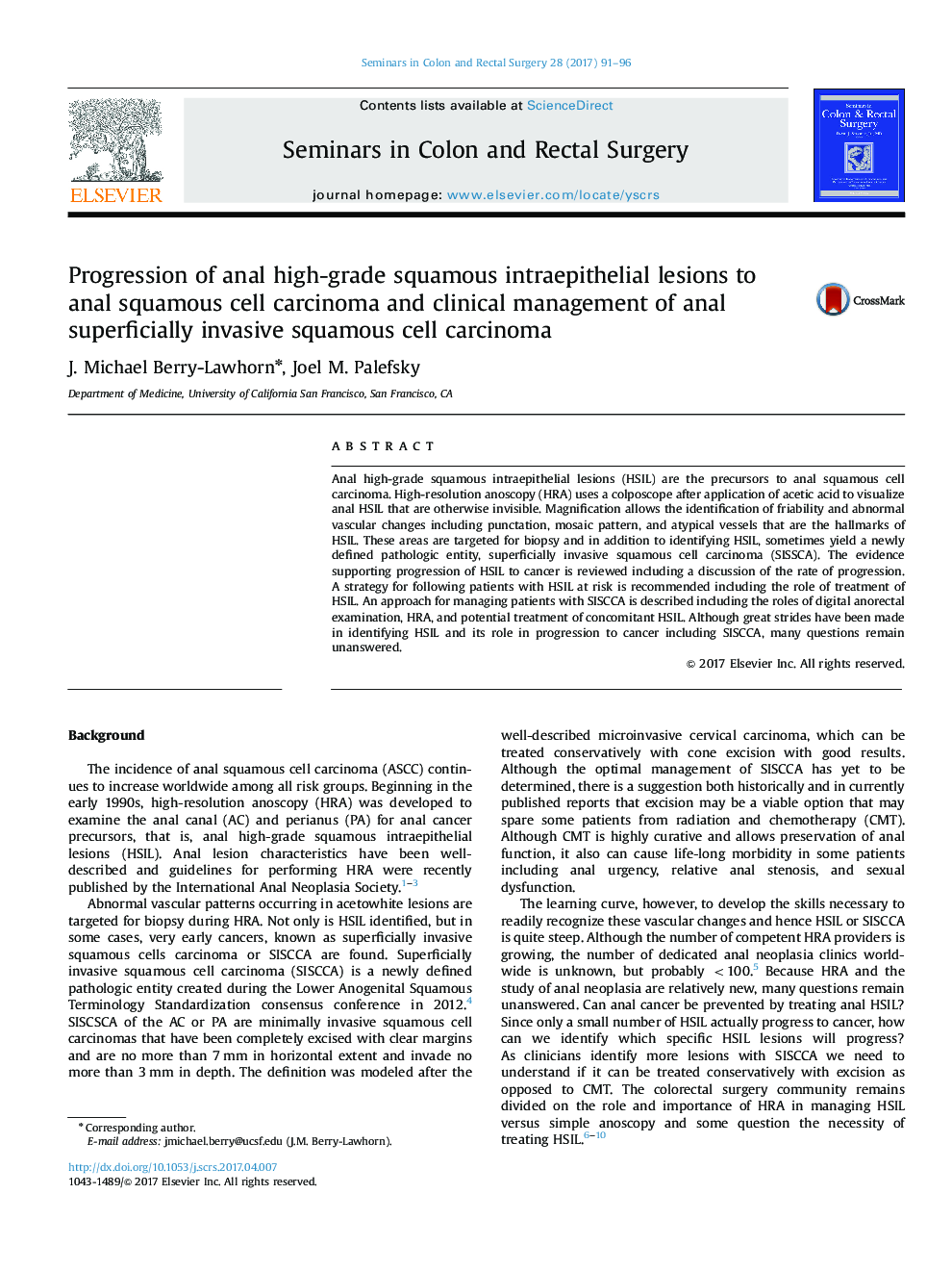| Article ID | Journal | Published Year | Pages | File Type |
|---|---|---|---|---|
| 5661548 | Seminars in Colon and Rectal Surgery | 2017 | 6 Pages |
Anal high-grade squamous intraepithelial lesions (HSIL) are the precursors to anal squamous cell carcinoma. High-resolution anoscopy (HRA) uses a colposcope after application of acetic acid to visualize anal HSIL that are otherwise invisible. Magnification allows the identification of friability and abnormal vascular changes including punctation, mosaic pattern, and atypical vessels that are the hallmarks of HSIL. These areas are targeted for biopsy and in addition to identifying HSIL, sometimes yield a newly defined pathologic entity, superficially invasive squamous cell carcinoma (SISSCA). The evidence supporting progression of HSIL to cancer is reviewed including a discussion of the rate of progression. A strategy for following patients with HSIL at risk is recommended including the role of treatment of HSIL. An approach for managing patients with SISCCA is described including the roles of digital anorectal examination, HRA, and potential treatment of concomitant HSIL. Although great strides have been made in identifying HSIL and its role in progression to cancer including SISCCA, many questions remain unanswered.
